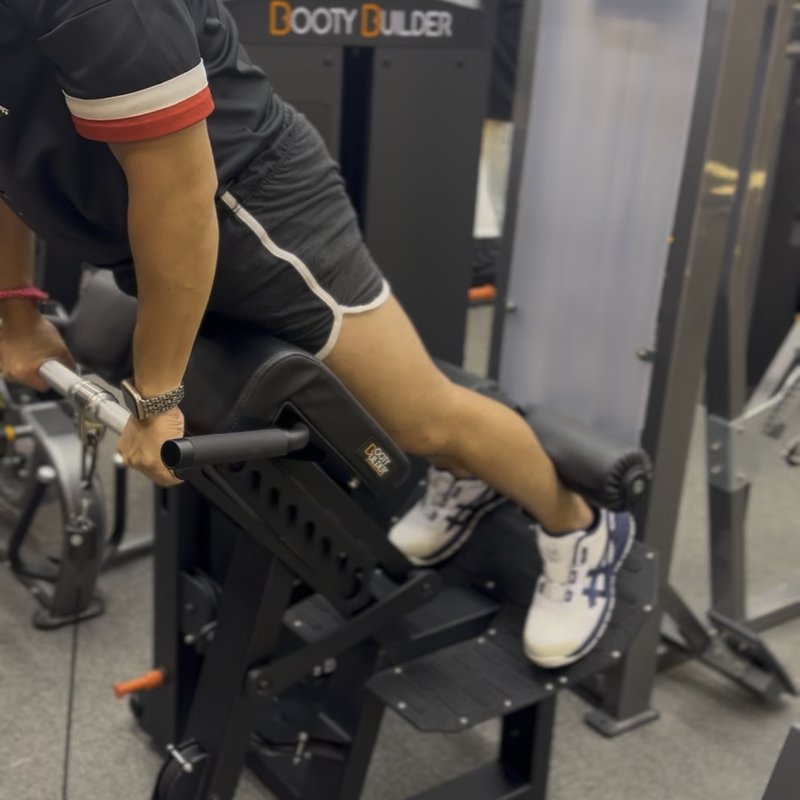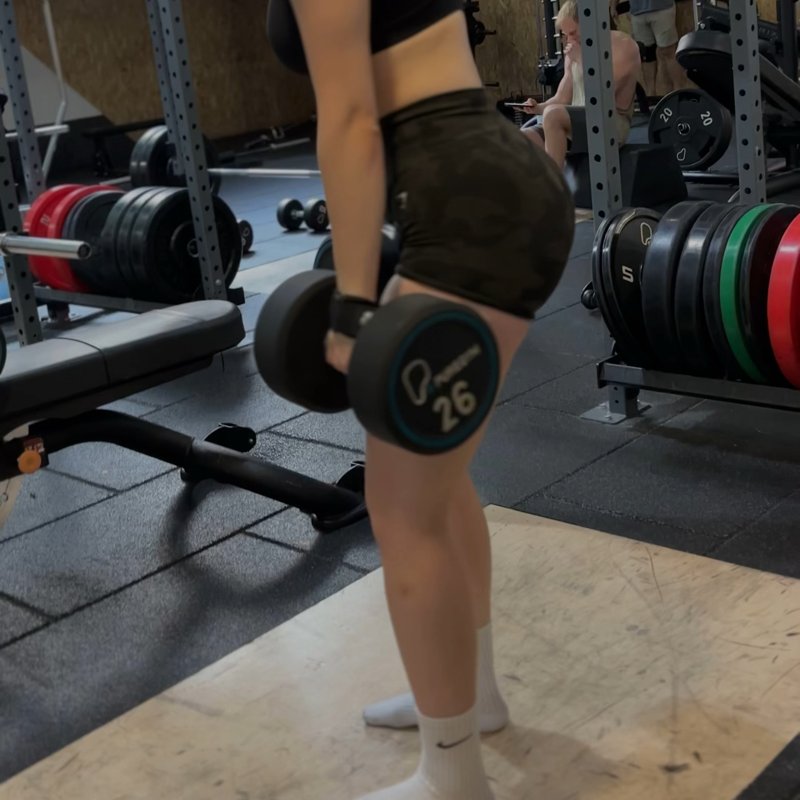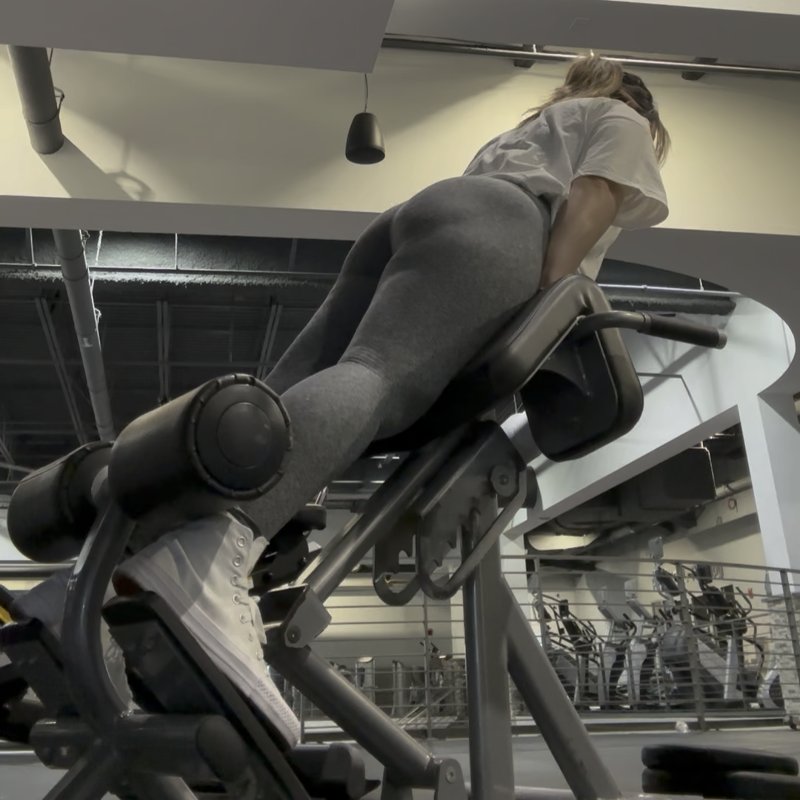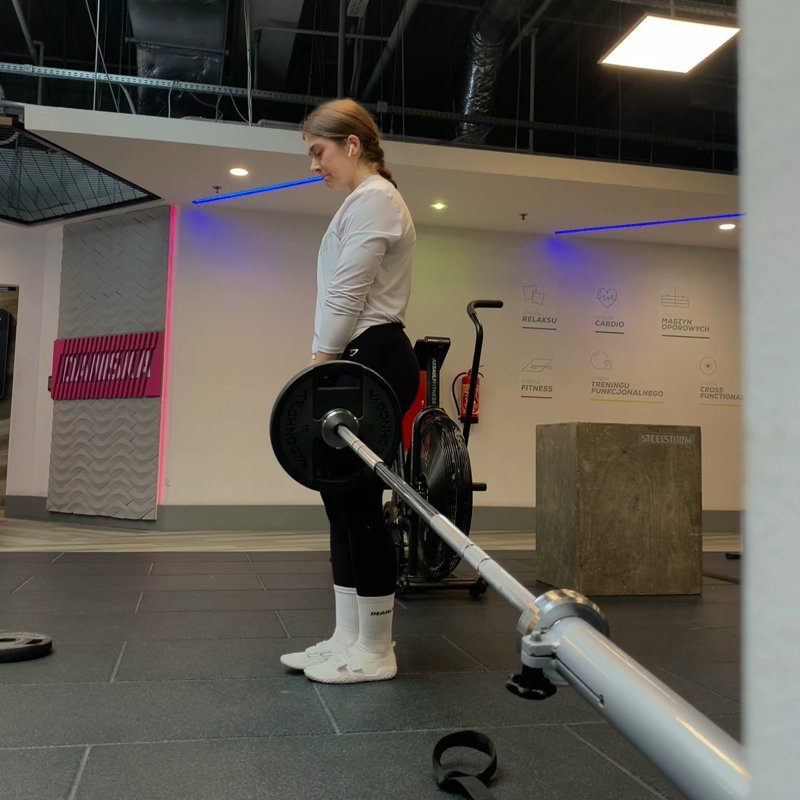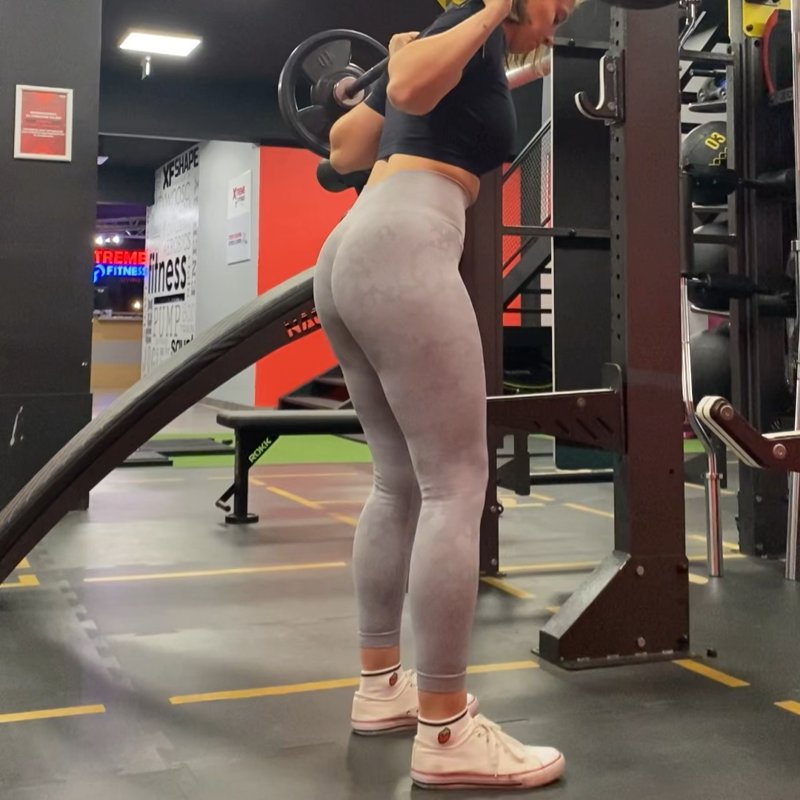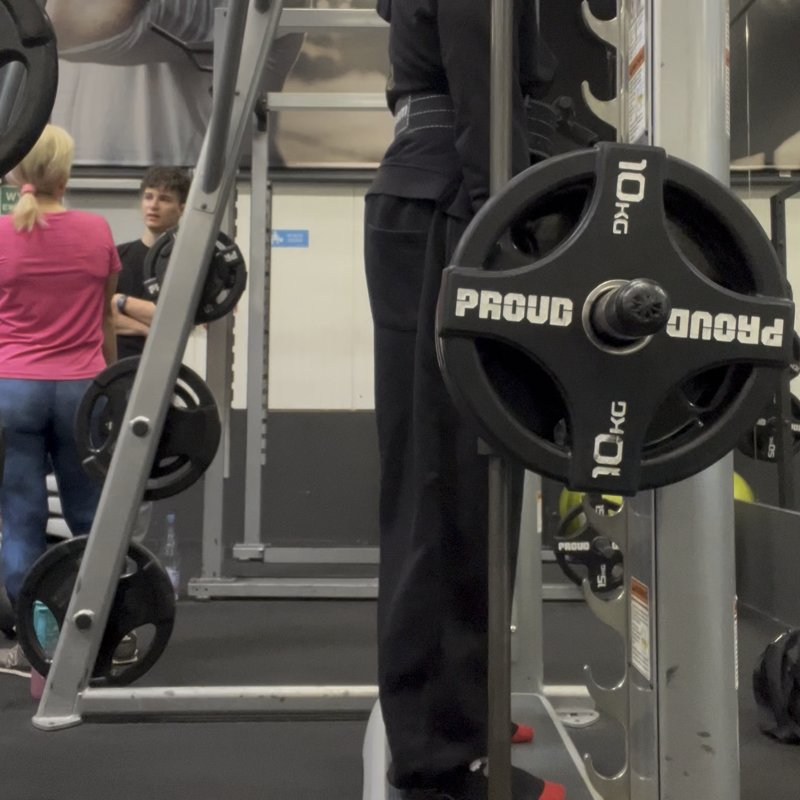Weighted Hyperextension: The Ultimate Guide
The Weighted Hyperextension is an advanced posterior chain exercise that targets the erector spinae, glutes, and hamstrings by extending the torso against gravity while holding additional weight for increased resistance.
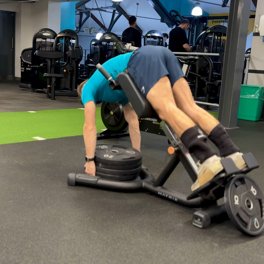
Quick Facts
Key Benefit
Strengthens the entire posterior chain with focused lower back engagement
Primary Muscles
Erector Spinae, Glutes, Hamstrings
Secondary Muscles
Abdominals, Hip Adductors, Posterior Deltoids, Traps
Equipment
machine, dumbbells (optional)
Difficulty
Intermediate
Type
Strength
In This Guide
Ready to master the Weighted Hyperextension?
Track your progress, see improvements over time, and build strength consistently.
Download GravitusThe Weighted Hyperextension stands as one of the most effective exercises for developing strength and endurance in the posterior chain—the interconnected system of muscles running along the back of your body. This advanced variation builds upon the traditional hyperextension (also called back extension) by incorporating additional resistance, typically in the form of a weight plate or dumbbell held across the chest.
While the conventional bodyweight hyperextension is excellent for beginners and rehabilitation, the weighted version provides the progressive overload necessary for continued strength development in intermediate to advanced trainees. The exercise primarily targets the erector spinae (the muscles running along your spine), but also significantly engages the gluteus maximus and hamstrings, creating comprehensive posterior development.
What makes the Weighted Hyperextension particularly valuable is its ability to isolate the lower back muscles in a controlled, joint-friendly manner that minimizes compressive forces on the spine compared to exercises like deadlifts. This makes it an excellent addition to any strength training program, whether your goals include injury prevention, improved posture, enhanced athletic performance, or aesthetic development of the posterior chain.
Benefits of the Weighted Hyperextension
Adding resistance to the hyperextension movement delivers numerous advantages for overall strength and function of the posterior chain.
Lower Back Strength
Directly targets and strengthens the erector spinae muscles that support and extend the spine, potentially reducing lower back pain and improving posture.
Glute Development
Effectively engages the gluteus maximus through hip extension, contributing to improved hip function, athletic performance, and aesthetic development.
Hamstring Activation
Involves the hamstrings as synergists in the hip extension portion of the movement, providing comprehensive posterior leg development.
Core Stabilization
Requires substantial core engagement to maintain proper positioning, indirectly strengthening the abdominals and obliques.
Complementary Exercise
Serves as an effective assistance movement for improving deadlift and squat performance by strengthening the posterior chain in a more isolated manner.
Injury Prevention
Develops the muscles that support proper spinal alignment and hip mechanics, potentially reducing the risk of back injuries during daily activities and athletic performance.
Proper Form & Technique
Setup
- Adjust the hyperextension bench so that when positioned correctly, the pad sits just below your hip bones.
- Position yourself face down on the bench with your feet secured under the ankle pads.
- Your upper thighs should rest on the main pad with your body able to bend at the hips.
- Hold your chosen weight (dumbbell or weight plate) across your chest, keeping it secured with both hands crossed over it.
- Start with your body forming a straight line from your head to your heels, neither hyperextended nor flexed.
Descent
- Maintaining a neutral spine (not rounded), slowly hinge at the hips to lower your upper body toward the floor.
- Keep your back flat throughout the movement—avoid spinal flexion (rounding).
- Lower until you feel a comfortable stretch in your hamstrings and lower back, typically when your torso is at approximately a 45-90 degree angle to your legs.
- Control the descent, taking 2-3 seconds to reach the bottom position.
Ascent
- Initiate the upward movement by contracting your glutes and hamstrings first, then engaging your lower back muscles.
- Raise your torso by extending at the hips until your body forms a straight line from head to heels.
- Avoid hyperextending your spine at the top position—your body should form a straight line, not an upward arch.
- Hold the top position momentarily, squeezing your glutes and lower back muscles.
- Repeat for the desired number of repetitions, maintaining control throughout the movement.
Key Form Tips
Spinal Position
Maintain a neutral spine throughout the entire movement—never round your lower back under load.
Hip Hinge
Focus on moving through the hips rather than the lower back, especially when initiating the upward phase.
Range of Motion
Find the appropriate depth for your body structure and flexibility—don't force excessive range if it causes discomfort.
Breathing Pattern
Exhale during the upward phase (extension) and inhale during the downward phase (flexion).
Weight Progression
Start with bodyweight before adding resistance, then progress conservatively to maintain perfect form.
Tempo Control
Use a controlled tempo to maximize muscle engagement and minimize momentum—typically 2-3 seconds down, 1-2 seconds up.
Muscles Worked
Primary Muscles
- Erector Spinae: This group of muscles runs along your spine from the sacrum to the base of your skull and serves as the primary mover during spinal extension, working intensely throughout the movement to control and produce the extension of your torso.
- glutes: As the largest muscle in the gluteal group, it's heavily engaged during the hip extension phase of the movement, particularly as you return to the starting position from the lowered position.
- Hamstrings: This group of three muscles (semitendinosus, semimembranosus, and biceps femoris) assists in the hip extension portion of the movement, working synergistically with the glutes.
Secondary Muscles
- hip adductors: The adductor magnus has a posterior portion that assists in hip extension, working alongside the glutes and hamstrings during the movement.
- abdominals: The rectus abdominis, transverse abdominis, and obliques work isometrically to stabilize the spine and maintain proper positioning throughout the exercise.
- traps: These upper back muscles assist in maintaining proper upper body positioning throughout the movement, particularly when using added resistance.
- posterior deltoids: The posterior portion of the shoulder muscles works to stabilize the shoulder blades as you maintain your arm position while holding the weight.
Common Mistakes and How to Fix Them
Hyperextending the Spine
Arching the back excessively at the top of the movement creates unnecessary stress on the vertebrae and can lead to injury. Fix by focusing on creating a straight line from head to heels at the top position—not an upward arch. Place a broomstick along your back during practice repetitions to develop awareness of proper alignment.
Rounding the Lower Back
Allowing the lower back to round during the lowering phase puts dangerous stress on the spine and spinal discs. Maintain a neutral spine position throughout the entire movement, thinking about keeping your back flat rather than curved. If you cannot maintain a neutral spine, reduce the range of motion or remove the added weight until control improves.
Using Momentum
Swinging or using excessive speed reduces muscle engagement and increases injury risk. Control the movement by implementing a specific tempo—for example, 3 seconds down, 1-second pause at the bottom, and 2 seconds up. Focus on feeling the target muscles work rather than completing repetitions quickly.
Improper Weight Placement
Holding the weight incorrectly can alter the movement mechanics and reduce effectiveness. For a weight plate, hold it against your chest with arms crossed. For a dumbbell, hold it close to your chest either horizontally or vertically. Avoid holding weights behind your head or with extended arms as these positions change leverage and can increase injury risk.
Excessive Range of Motion
Lowering too far puts unnecessary stress on the lower back and can lead to injury. Lower only until you feel a comfortable stretch in your hamstrings and lower back—this is typically when your torso forms about a 45-90 degree angle with your legs. The appropriate range will vary based on individual flexibility and structure.
Insufficient Hip Engagement
Focusing too much on the lower back without properly engaging the glutes and hamstrings. Initiate the upward phase by consciously contracting your glutes first, thinking about driving your hips forward rather than lifting with your back. Practice glute activation exercises separately to improve mind-muscle connection if needed.
Exercise Variations
Beginner Variations
-
Bodyweight Hyperextension
Perform the movement without added resistance to master the form and develop base strength before progressing to weighted versions.
-

45-Degree Hyperextension
Performed on an angled bench that provides more foot and leg support, reducing the resistance compared to the traditional horizontal hyperextension.
-
lats
Similar to the standard hyperextension but performed on a Roman chair, which may offer different support options for beginners.
Resistance Variations
-

Plate-Loaded Hyperextension
Holding a weight plate against your chest with crossed arms to add resistance.
-
Dumbbell Hyperextension
Using a single dumbbell held vertically or horizontally against your chest.
-

Barbell Hyperextension
Advanced variation where a barbell is held across the upper back/shoulders, similar to a squat position.
-

Resistance Band Hyperextension
Using a resistance band anchored to the feet or machine and held across the upper back or chest for accommodating resistance.
Targeting Variations
-
lats
A variation that deliberately starts with a rounded upper back (not lower back) to increase upper erector involvement, used cautiously and typically with lighter weights.
-

Glute-Focused Hyperextension
Emphasizing hip extension by stopping the upward movement when the body is straight rather than extending the back, thus shifting emphasis to the glutes.
-

Isometric Hyperextension
Holding the top position for an extended period (5-30 seconds) to increase time under tension and muscular endurance.
Frequently Asked Questions
The safety of Weighted Hyperextensions for those with back issues depends entirely on the specific condition and its severity. For many individuals with mild lower back discomfort related to weakness or postural issues, properly performed hyperextensions (starting with bodyweight before progressing to weighted) can be therapeutic and strengthening. However, for those with disc herniations, spinal stenosis, spondylolisthesis, or other diagnosed spinal pathologies, this exercise might be contraindicated or require significant modification. Always consult with a healthcare professional before beginning this exercise if you have existing back issues. If cleared to perform the movement, start with bodyweight only, use impeccable form with reduced range of motion if needed, and progress very gradually while monitoring symptoms.
Most trainees benefit from incorporating Weighted Hyperextensions 1-3 times per week, depending on overall program design and recovery capacity. If you're also performing other lower back-intensive exercises like deadlifts, squats, or Olympic lifts, limit dedicated hyperextension work to 1-2 sessions per week with at least 48 hours between sessions that significantly tax the same muscle groups. For those using the exercise primarily for rehabilitation or postural correction, more frequent sessions with lighter loads (even daily with bodyweight only) might be appropriate. Regardless of frequency, always ensure you're fully recovered from previous training sessions—persistent lower back soreness or fatigue indicates a need for additional recovery time or reduced training volume.
Generally, it's most effective to perform Weighted Hyperextensions after your main compound lifts (like squats or deadlifts) rather than before. Pre-fatiguing the lower back with hyperextensions could potentially compromise form and strength on technical movements like deadlifts, increasing injury risk. As an accessory exercise, hyperextensions work well toward the middle or end of a workout to target the posterior chain after the primary strength work is complete. However, there are exceptions to this guideline—if you're using very light hyperextensions specifically as a warmup to activate the posterior chain before deadlifting, a few controlled bodyweight repetitions can be beneficial. The placement should ultimately align with your specific training goals and program design.
Begin with bodyweight-only hyperextensions before adding external resistance. Once you can perform 2-3 sets of 12-15 perfect bodyweight repetitions with controlled tempo, start with very light resistance—typically 5-10 pounds for most trainees. A small weight plate or light dumbbell held across the chest is ideal for initial progression. From there, increase weight incrementally (2.5-5 pounds per progression) only when you can maintain perfect form throughout all prescribed sets and repetitions. Resist the temptation to increase weight too quickly, as form breakdown with this exercise can lead to lower back strain. Remember that even modest resistance creates significant load on the posterior chain due to the leverages involved in this movement.
While Weighted Hyperextensions and deadlifts both target the posterior chain, they serve different purposes and shouldn't be viewed as interchangeable. Deadlifts are a fundamental compound movement that trains whole-body strength, power production, and force transfer through multiple joints with significant loading potential. Hyperextensions, even weighted, are more of an isolation/accessory movement with more limited loading capacity that targets the lower back more directly with less overall systemic stress. For comprehensive strength development, deadlifts (or a suitable variation) should typically remain a program staple, with hyperextensions serving as a complementary accessory. However, hyperextensions can temporarily replace deadlifts during rehabilitation periods, deload phases, or for beginners developing baseline posterior chain strength before learning the deadlift pattern.
Video Demonstrations

Log in to watch video demonstrations
Login to Watch3 video demonstrations available
Find more video demonstrations in the Gravitus app
Tips from the Community
-

Mind muscle connection with lower back or Glutes depending on the targeted muscle.
-

You can do these with a barbell held with straight arms.
-

On eccentric it's like an RDL, on concentric it's like a hip thrust so drive hips into pad like you're thrusting them into it
Track your progress with Gravitus
Download Gravitus to log your workouts, track your progress, and join a community of fitness enthusiasts.

Helpful Resources
One Rep Max Calculator
Find your one rep max for any exercise without maximal testing. Essential for developing effective strength training programs.
Calculate 1RMWorkout Programs
Follow structured workout programs created by fitness professionals to maximize your strength and muscle gains.
View Programs
